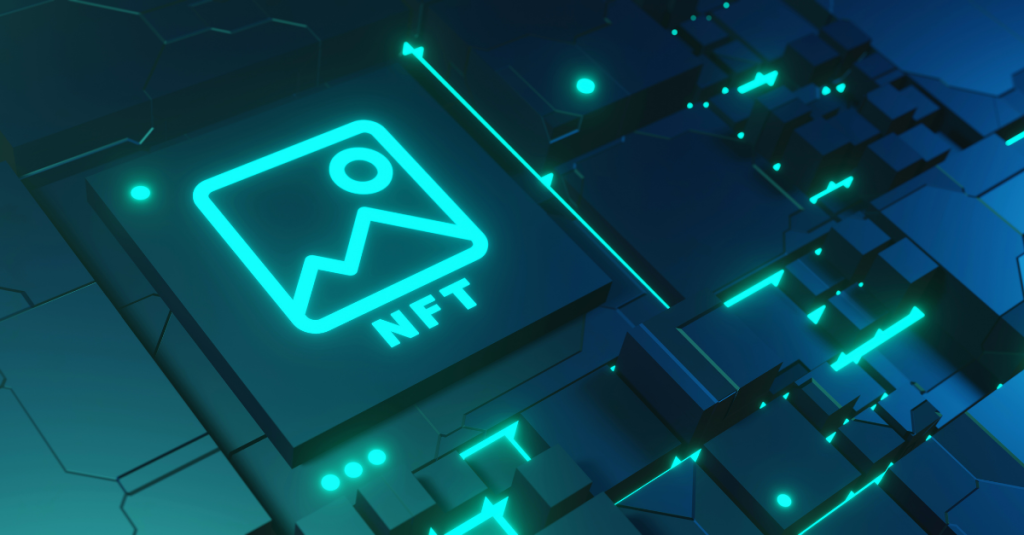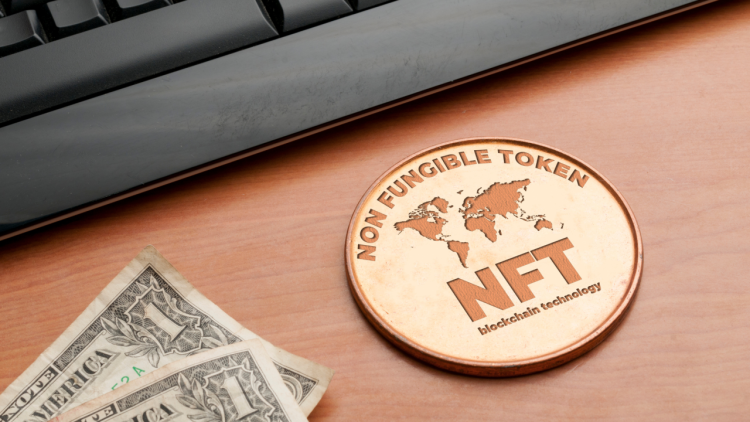Introduction
The evolution of virtual goods in gaming has taken a significant leap with the advent of Non-Fungible Tokens (NFTs). Traditionally, virtual items in games, such as skins, weapons, or characters, were confined within the boundaries of a specific game. Once acquired, they could only be used within that game’s ecosystem, leaving players with limited ownership and portability. However, NFTs offer a paradigm shift by enabling digital ownership of virtual items that are not bound by a single game’s platform, allowing assets to be used across multiple games and virtual worlds.
NFTs have become increasingly important in the gaming industry because they allow for true ownership of in-game assets. Unlike traditional digital goods, which are typically stored on centralized servers and owned by the game publisher, NFTs grant players direct ownership of the assets they acquire, giving them the ability to buy, sell, trade, or even use them across multiple games.
In this article, we will explore how NFTs are changing the landscape of virtual items in gaming. We will examine the technology behind NFTs, the potential for cross-game interoperability, and the future implications of NFT-driven economies in gaming. Moreover, we will delve into the benefits and challenges of this innovation, shedding light on the potential for NFTs to reshape the gaming industry and digital economies at large.
1. Understanding Virtual Goods and NFTs in Gaming
1.1 Virtual Goods in Traditional Gaming
Virtual goods have been an integral part of video games for years. These goods include in-game items such as skins, cosmetics, weapons, characters, and virtual currency. They serve various purposes within games, from enhancing gameplay to providing a way for players to personalize their characters. Traditionally, virtual goods were not owned by players in a legal sense. Instead, they were controlled by the game developer or publisher, and the player’s access to them was tied to the game’s server.
For example, when a player purchases a skin or an in-game item, they do not actually own the asset. They simply have a license to use it within the game, and if the game server is shut down or the player is banned, the item could be lost.
1.2 The Rise of NFTs in Gaming
With the advent of blockchain technology, NFTs have brought a new dimension to the concept of ownership within digital spaces. Non-fungible tokens are unique, verifiable digital assets stored on a blockchain. Unlike traditional virtual goods, NFTs represent actual ownership of a specific item, and their uniqueness is verifiable through the blockchain’s transparent and immutable ledger.
In the context of gaming, NFTs enable players to own in-game assets that are not controlled by the game publisher. These assets are tied to the player’s digital wallet, giving them the freedom to buy, sell, and trade their virtual goods in decentralized markets or use them in other games that support NFT integration.
2. Cross-Game Interoperability: The Holy Grail of NFT Gaming
2.1 Defining Cross-Game Interoperability
Cross-game interoperability refers to the ability of in-game assets, represented as NFTs, to be used across multiple games or virtual worlds. This contrasts with traditional game assets, which are often locked within a single ecosystem. The integration of NFTs into gaming has the potential to break down these barriers, enabling players to transfer assets from one game to another seamlessly.
For example, imagine a scenario where a player acquires a unique sword NFT in one game. Instead of being confined to just that game, the player could take the sword and use it in a different game, even if that game has a completely different genre or setting. This would represent true interoperability, where assets have value and utility beyond the game in which they were originally created.
2.2 The Role of Blockchain in Cross-Game Use
Blockchain technology plays a crucial role in enabling cross-game interoperability. The decentralized nature of blockchain ensures that NFTs are not tied to a single centralized server or platform. Instead, they exist as digital assets on a distributed ledger, which allows them to be accessed and used across different platforms that support the same blockchain protocol.
By storing ownership and transaction records on the blockchain, NFTs can be moved or transferred between different games or virtual environments without the need for intermediaries. This decentralization gives users more control over their digital assets, allowing them to make their own decisions about how they use or trade their items.
2.3 Example of Cross-Game NFTs in Action
One of the most exciting aspects of NFTs in gaming is the possibility of cross-game interoperability. Several gaming companies and platforms are already experimenting with this concept. For example, The Sandbox and Decentraland are two metaverse platforms that allow users to buy, sell, and trade virtual land, assets, and avatars using NFTs. These assets are not confined to a single platform and can be used across different virtual worlds.
Similarly, Axie Infinity, one of the most successful blockchain-based games, allows players to acquire NFTs in the form of creatures called Axies. These creatures can be traded, bred, and used in battles, and players can sell them on secondary markets like OpenSea. The concept of taking Axies or other NFTs across different games and platforms is becoming increasingly feasible, as more games and worlds adopt blockchain technology.

3. Benefits of NFTs for Cross-Game Use
3.1 True Ownership of Digital Assets
One of the primary benefits of NFTs is the concept of true ownership. In traditional gaming, virtual items are owned by the game publisher, and players are merely renting them for as long as they play the game. However, NFTs allow players to truly own their in-game assets. The ownership is recorded on the blockchain, and players can carry their items across games or sell them as they wish.
This ownership model shifts the balance of power from game publishers to players, empowering the gaming community with more control over the assets they acquire and use.
3.2 Economic Opportunities for Players
NFTs introduce new economic models within gaming. Players can not only buy and sell virtual items but also earn income by trading NFTs on secondary markets. Some players have even been able to make a living from flipping NFTs or participating in NFT-based games.
Additionally, as NFTs become more common, players can acquire rare items that may appreciate in value over time. Cross-game interoperability can further enhance these opportunities, as items with high demand in one game could also be valuable in another game, increasing the overall value of the NFT.
3.3 Enhanced Gaming Experience
The ability to use NFTs across different games enhances the overall gaming experience. Players are no longer confined to a single game’s ecosystem, which opens up possibilities for cross-game experiences. For example, a player may use a unique sword in a role-playing game (RPG) and then bring it into a battle royale game to use in combat. This kind of seamless integration adds a layer of excitement and novelty to the gaming experience.
NFTs also allow for the creation of unique, player-owned items that can be traded between players, creating an entirely new way of interacting with virtual worlds. These dynamic interactions add depth to the game, as players can create personalized avatars or acquire rare, one-of-a-kind assets that have tangible value.
4. Challenges and Considerations
4.1 Technical Challenges
While the concept of cross-game NFTs is exciting, there are still significant technical challenges to overcome. Different games are often built on different blockchain protocols or platforms, and not all games support NFTs or the same standards for interoperability. For example, NFTs created on Ethereum might not be easily compatible with a game built on Solana or Flow.
The gaming industry will need to establish standardized protocols for NFTs to ensure seamless integration across different platforms. This is where projects like ERC-721 and ERC-1155 (Ethereum token standards for NFTs) come into play, as they provide a foundation for ensuring compatibility across different games and ecosystems.
4.2 Market Volatility
The NFT market, especially in gaming, can be volatile. The value of virtual items can fluctuate dramatically based on demand, rarity, and speculation. This volatility could deter some players from fully embracing NFTs, as the financial value of their assets might change unexpectedly. Players who invest heavily in NFTs could find themselves with items that have significantly decreased in value, especially if the popularity of the game or item wanes.
4.3 Environmental Concerns
Blockchain technology, particularly on proof-of-work networks like Ethereum, is known for its high energy consumption. The environmental impact of NFTs has raised concerns, especially as more and more games adopt blockchain-based economies. While Ethereum is transitioning to proof-of-stake (PoS), which is more energy-efficient, the broader issue of energy consumption in the NFT and gaming industries remains a point of contention.
Games and blockchain projects will need to explore eco-friendly solutions, such as using energy-efficient blockchains like Tezos or Polygon, to reduce the environmental impact of NFTs.
5. The Future of NFTs in Gaming
5.1 A New Era of Digital Economies
The rise of NFTs in gaming is just the beginning. As the gaming industry continues to adopt blockchain technology, NFTs will likely become a central feature in virtual economies. Games will increasingly allow players to not only participate in their own ecosystems but also interact and trade with other games in a seamless and interconnected digital economy.
5.2 Integration with the Metaverse
The concept of
NFTs is also tightly linked to the growing trend of the metaverse. The metaverse is a collective virtual space where users can interact with each other and digital environments in real-time. NFTs will play a crucial role in the metaverse, as they will allow users to create, own, and trade virtual goods across different virtual worlds and games.
In the future, NFTs could allow players to have persistent avatars, digital clothing, and assets that exist across multiple metaverse platforms, creating a unified experience that transcends individual games and worlds.
Conclusion
NFTs are revolutionizing the concept of virtual goods in gaming by enabling true ownership, cross-game interoperability, and new economic opportunities. As the technology matures, NFTs have the potential to change how we perceive and interact with digital assets, making the gaming experience more dynamic, interactive, and rewarding for players.
Despite the challenges and concerns that come with NFTs, the future of gaming looks promising, as NFTs provide a bridge between games, communities, and digital economies. By ensuring that virtual items have value and utility across multiple platforms, NFTs are paving the way for a more interconnected, player-driven gaming ecosystem.

















































